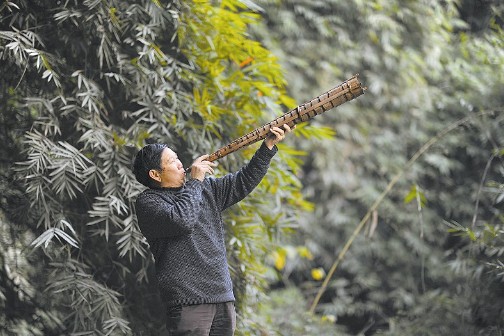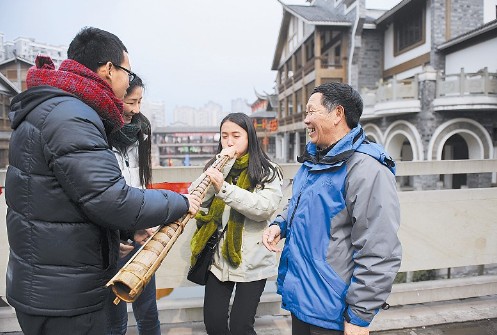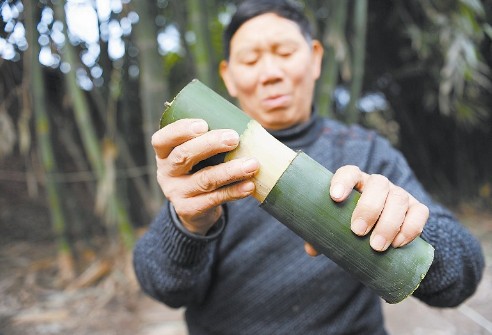The intangible cultural heritage number waiting for the inheritor

Blowing "Ha" every day has become an important part of Guo Daoming's life.

Guo Daoming will happily teach young people who are interested in "Ha horn" on the street.

Guo Daoming is making "Ha Hao" with chopped bamboo.
"Ha" is a provincial intangible cultural heritage in Nanxi District, Yibin City, with a history of more than 2,000 years. Guo Daoming, 64 years old this year, is the inheritor of Nanxi's "Ha". Recently, the reporter not only saw the production process of "Ha Hao", but also heard Guo Daoming tell the story of "Ha Hao".
According to historical records such as the Annals of Nanxi County, in the sixth year of Emperor Wu of the Han Dynasty (135 BC), the Bo people mainly lived in Bodao County on the shore of the Yangtze River, that is, today's Fuxikou area in Nanxi District. Because of the rich bamboo here, the Bo people celebrate the harvest after working hard, so they take the bamboo as the horn and play the bamboo for fun. And because the Bo people's surname is "Ha", later generations call the local musical instrument invented by the Bo people "Ha Hao", which has been handed down to this day.
Guo Daoming has been in contact with the "Ha" since he was a child. After work, by chance, he picked up this childhood instrument again. Since then, Guo Daoming not only fell in love with playing this kind of fresh and lively horn instrument, but also began to make his own "Ha horn".
After years of accumulation of experience, Guo Daoming concluded that the best material for making "Ha Hao" is Cizhu grown in the twelfth lunar month, thinning one end of each bamboo section, and then inserting each section into molding, the thinner the cut, the better the joints. The smaller the gap, the better the fullness of the sound. According to the length of the "Ha horn", its sound is also very different. The short "Ha horn" has a thinner and crisper sound, but it cannot be transmitted too far. The voice is low, but can travel far.
Guo Daoming said that in the past, the "Ha horn" has always been a musical instrument played by the local people to celebrate the New Year and festivals. Nowadays, there are fewer and fewer people who can blow the "Ha". In order to pass on it, Guo Daoming's eldest son and granddaughter are also learning, and Guo Daoming also goes to all local schools in Nanxi to popularize and teach "Ha horn" playing skills.
 渝公网安备 50010702504639号
渝公网安备 50010702504639号